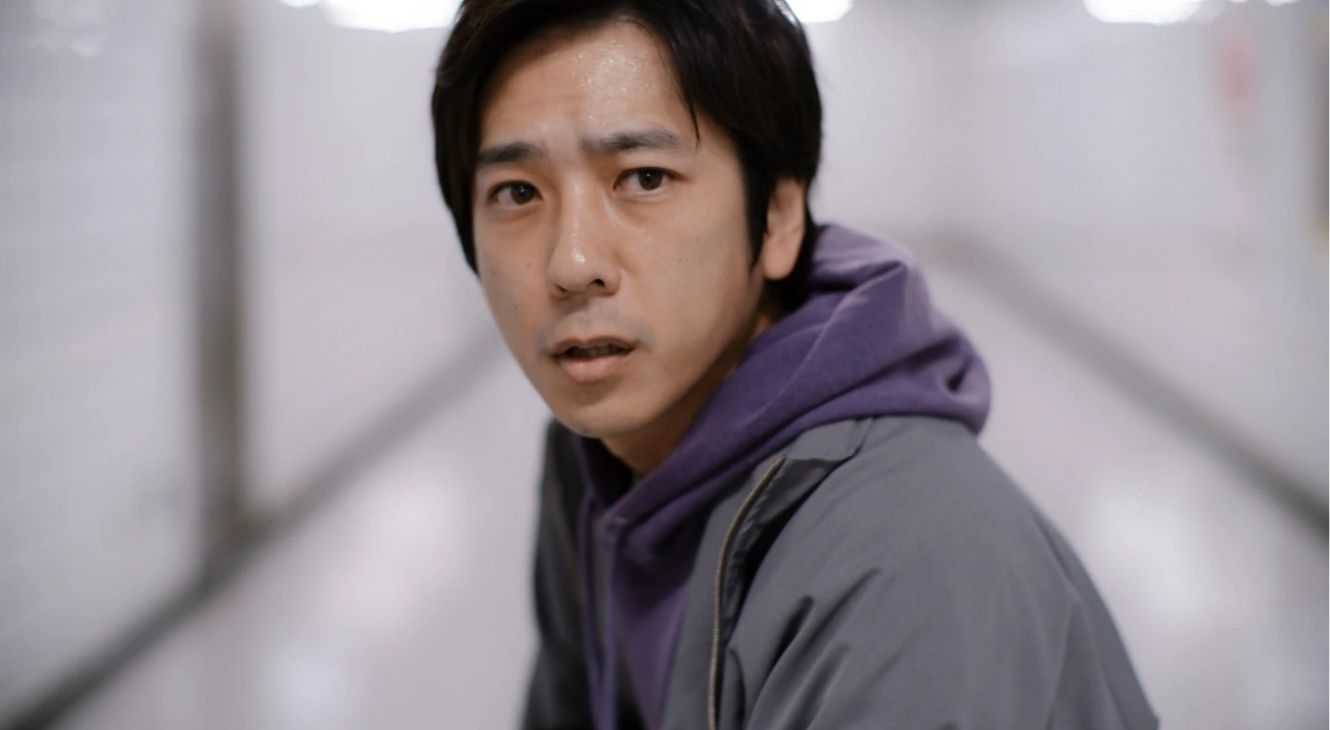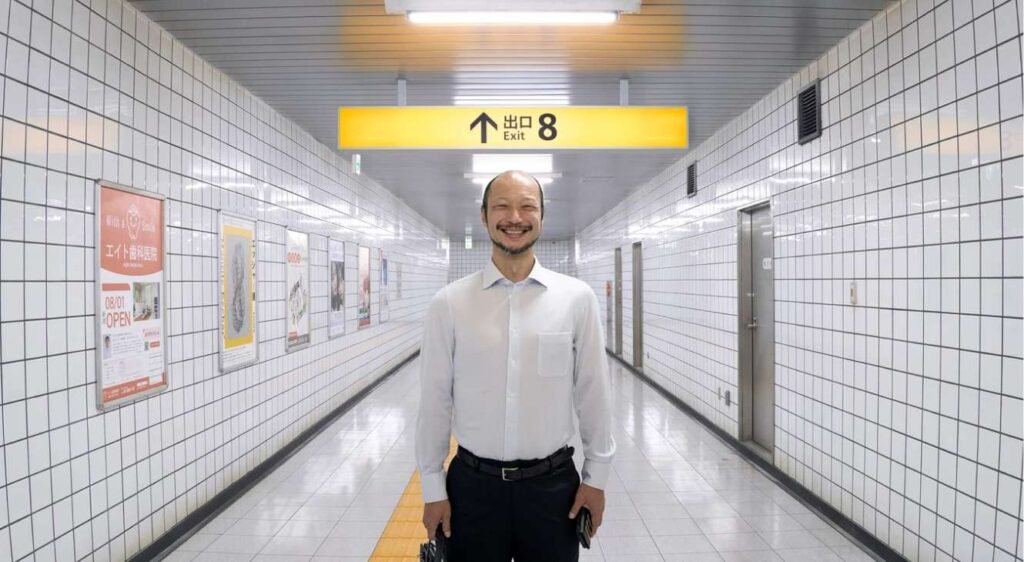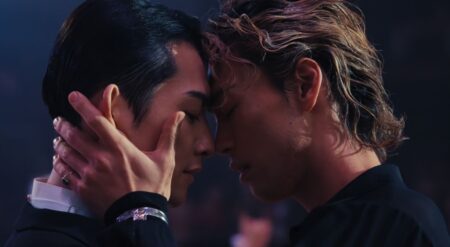It’s rare for video game adaptations to actually retain the feel of a game. Regardless of how visually or thematically faithful a retelling is, cinema offers zero space for player agency. We’re forced to watch someone else play. Yet, despite this ingrained limitation, Genki Kawamura’s purgatorial chiller, Exit 8—adapted from Kotake Create’s cult horror game—weaponizes the form and feel of its IP’s repetitious structure to manifest an exciting exercise in perspective.
Echoing the game’s clever Escher loop, in which the player is trapped in a seemingly endless walkway in a Tokyo subway station, Kawamura crafts an escape room-adjacent experience that deeply immerses us in the details of each meticulously crafted frame. Its high-concept setup actively taunts the audience, to see if they, alongside the protagonist, can quickly connect the pieces to find the all-elusive Exit 8.
We open with our nameless, asthmatic protagonist, dubbed “The Lost Man” (a nuanced Kazunari Ninomiya), travelling to work on the Tokyo subway amid a bustling, screen-obsessed crowd of commuters. As he detrains, he receives a life-changing call from his ex that he’s not quite ready to handle. Captured in a long POV take that slyly recalls the gameplay of its source material, Kawamura conjures an opening sequence that’s not only enveloping and suffocating but quickly assumes an uncanny feel, doubling as a nervy portal into the netherworld.
He loses signal when he enters a long zig-zagging corridor that portends to lead to Exit 8, where there’s little of note except a man robotically strutting beside him (the unsettling “Walking Man,” played by Yamato Kôchi). As The Lost Man continues to circle back into the same corridor, the hopelessness of his situation dawns upon him. A noticeboard details the rules of the cruel, cosmic game he’s trapped in: If anything seems amiss, turn back immediately. Miss even a single, tiny anomaly and he’s slung to the start, doomed to loop again.
Little tweaks in detail build up into huge gaslighting techniques in Exit 8.

It’s a setup that gimmicks and cheap gags could easily define, but Kawamura’s real-time, coiling structure seamlessly builds on itself—looping, contorting, and shifting to create something far more cerebral and existential than meets the eye. The baked-in liminality of this closed-off nether-region tautly reflects the monotonous cycles of life we often sink into, where daily existence is a form of purgatory in itself.
With the help of subtle, digital trickery, Exit 8 mostly unfolds as a series of long, unbroken takes that embroil us in each harrowing loop alongside its troubled protagonist, anticipating and fearing the minor and major horrors that lie around the corner.
From tiny discrepancies like a misplaced door handle to outlandish anomalies like dripping blood, Kawamura’s single-take structure weaponizes every corner of each frame, plunging audiences into an enthralling, endless hunt for each anomaly. Much like The Lost Man, we come to second-guess and doubt each detail, with each quick glance or scan fostering greater uncertainty.
Hard decisions made in the final act undo the ambiguity of its setting, but also remove its daring mystery.

As the film’s repetitive structure threatens to drag and derail, Kawamura and co-writer Kentaro Hirase relish unexpected detours that center on other figures—who might or might not be other ill-fated wanderers. Such moments not only fend off monotony with some deft world-building, but are seamlessly interwoven, emboldening the film’s cyclical tapestry.
Yet the film’s enigmatic, wonderfully illogical edge buckles under the weight of some trite characterization. While not free from a bevy of abstract interpretations, Exit 8 too closely aligns itself with its protagonist’s obvious social and personal issues, producing hollow, mawkish musings on the nature of fatherhood that also incorporate confusing pro-life sentiments. For all its attempts to unnerve and unsettle, Exit 8 becomes far too literal and lucid in its closing act, pinning its purgatory down instead of imbuing it with greater, disquieting mystery.
Such contrivances bleed into the closing horror segments, with their surreal and cerebral thrills giving way to trivial, eye-rolling jump scares. A penchant for formulaic grotesqueries undoes its gorgeously discomforting atmosphere. As it hurdles towards the credits, Kawamura’s film veers dangerously close to becoming a cartoon parody of itself.
Although Exit 8 struggles to sustain its atmospheric highs, becoming less interesting with each loop, it survives as a daring genre exercise. Few game adaptations can claim to capture the essence of their source material. Despite some dire attempts to imbue some stale filmic storytelling, its vision of purgatory is too encompassing to resist.
Exit 8 played as a part of the 2025 Toronto International Film Festival.
Exit 8
-
Rating - 7/107/10
TL;DR
Although Exit 8 struggles to sustain its atmospheric highs, becoming less interesting with each loop, it survives as a daring genre exercise.








